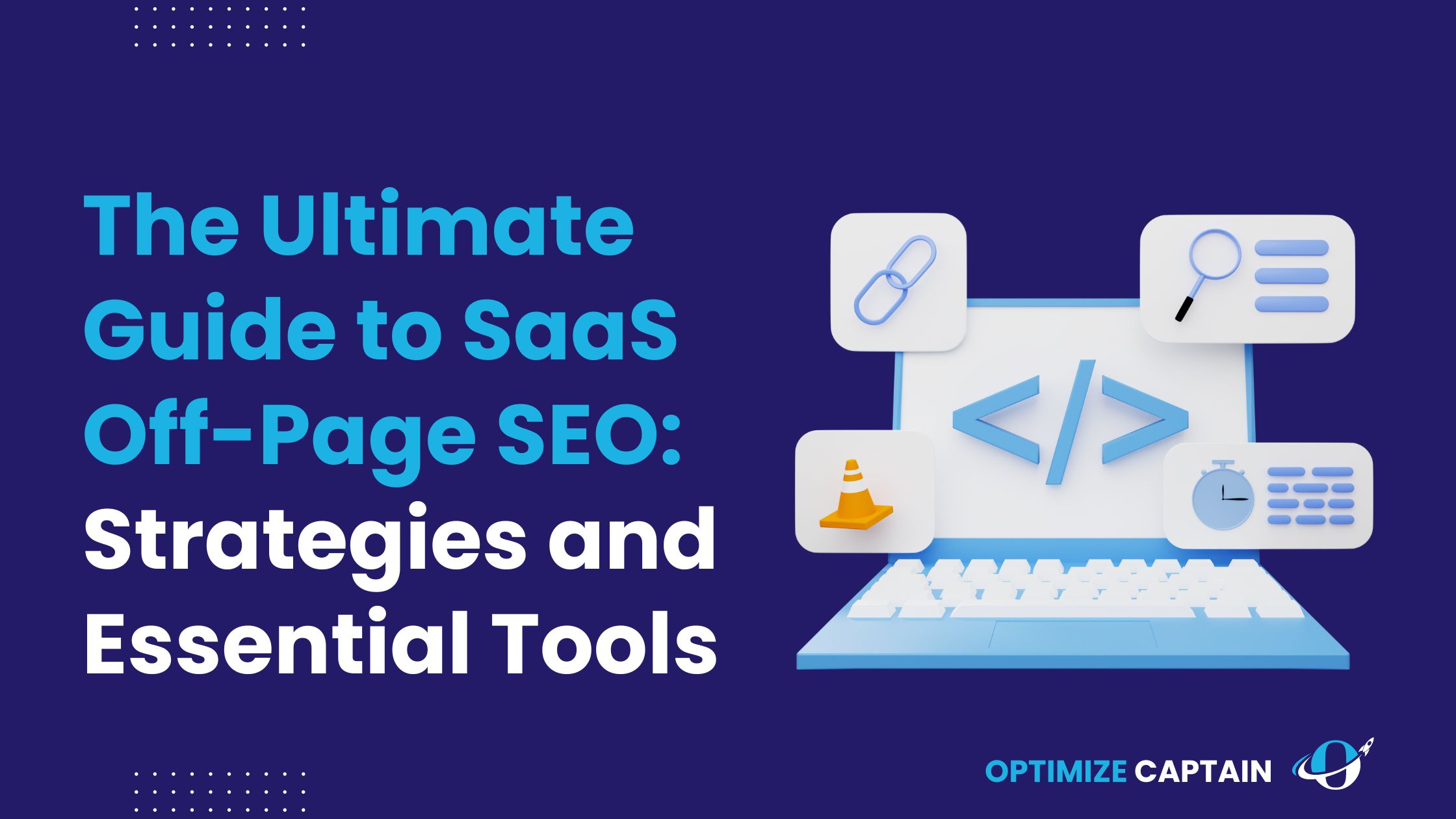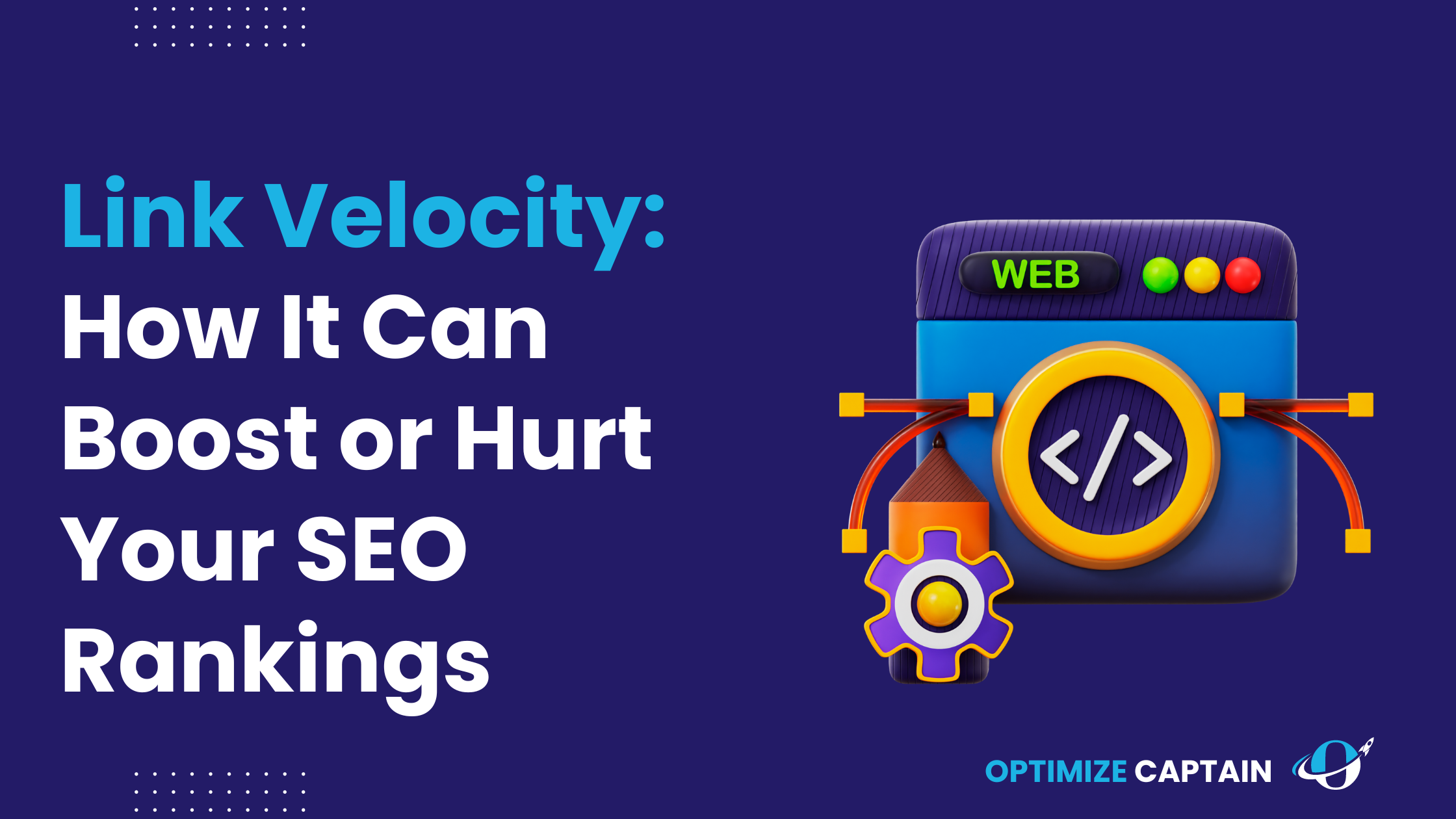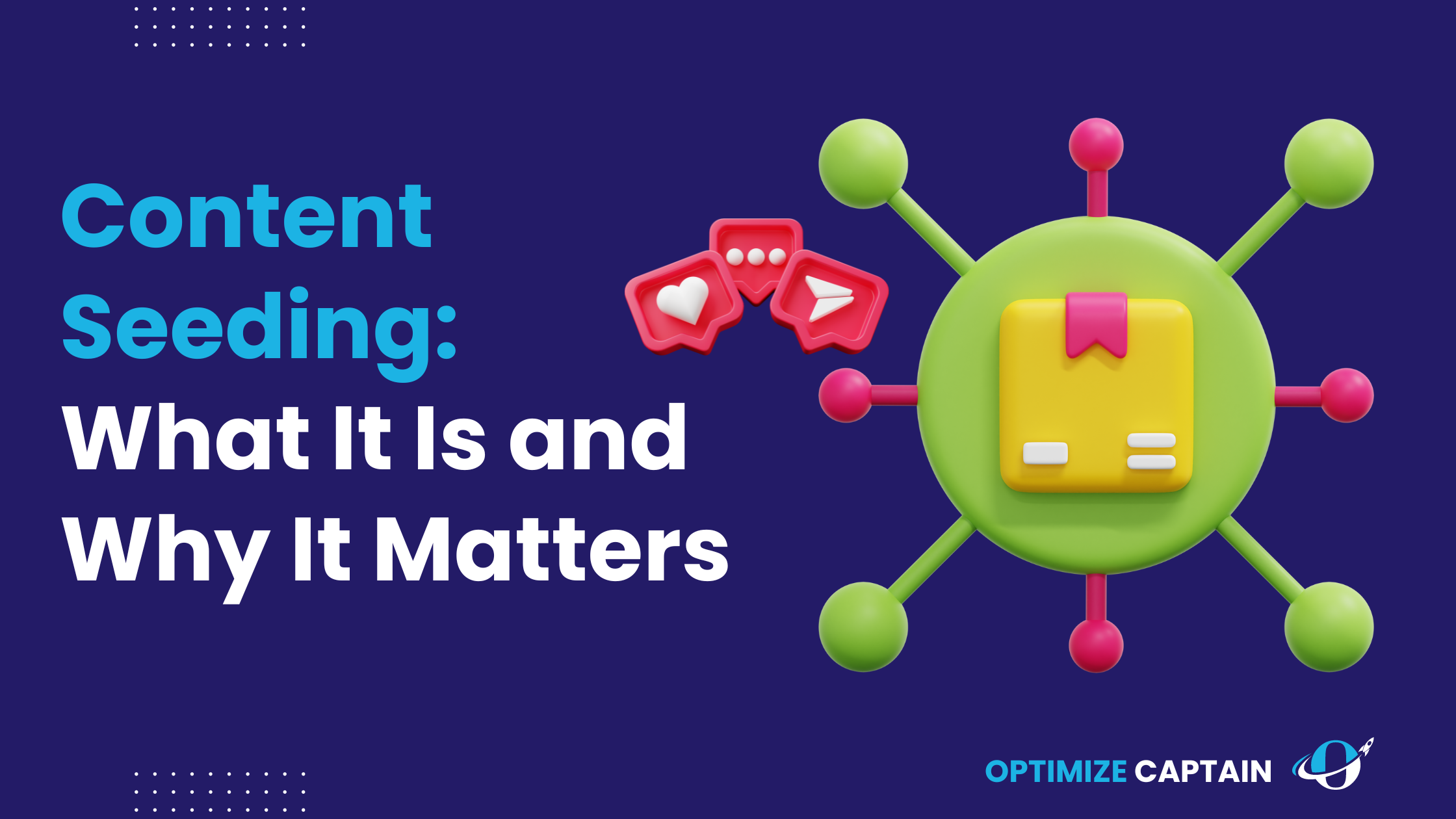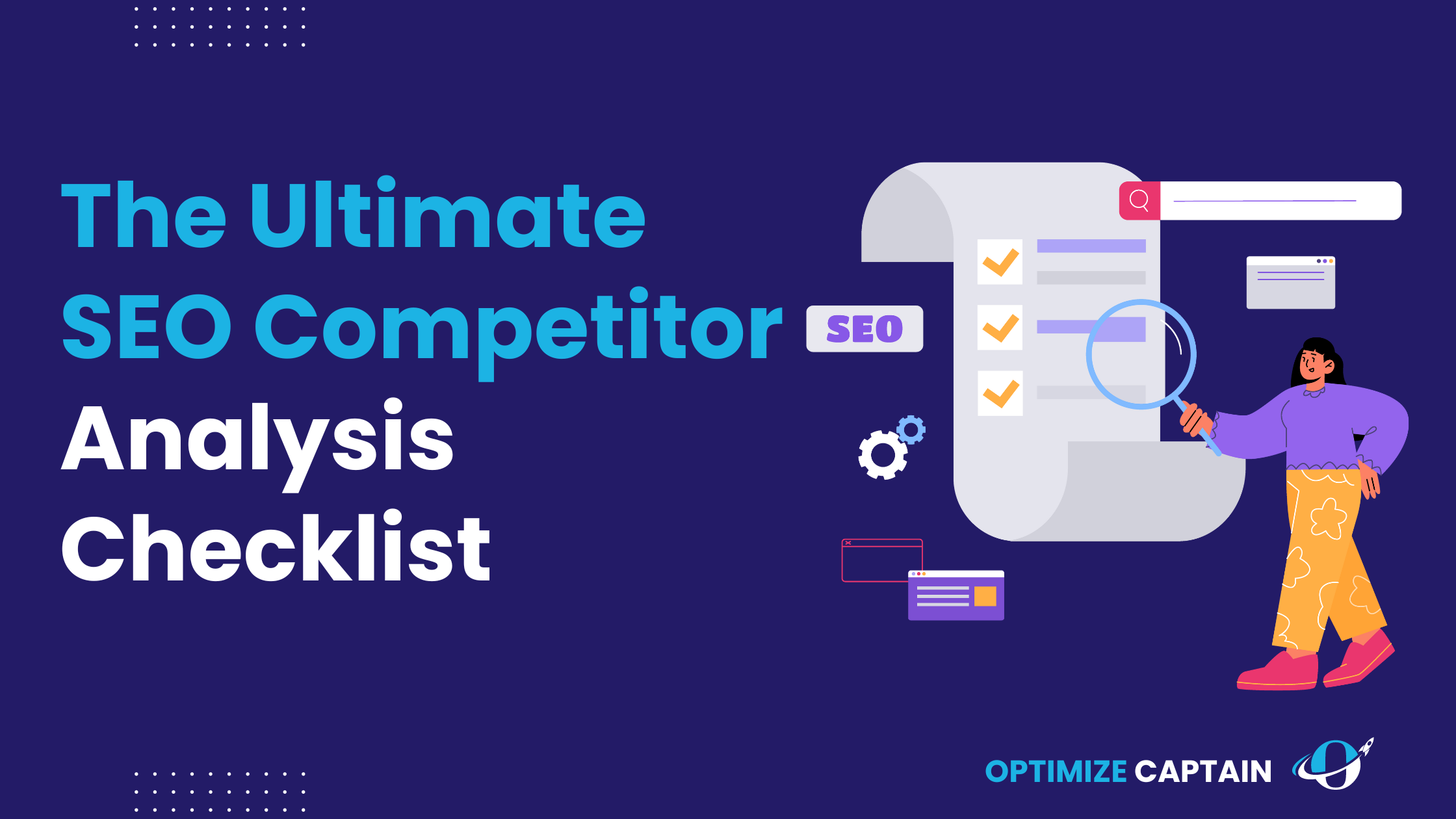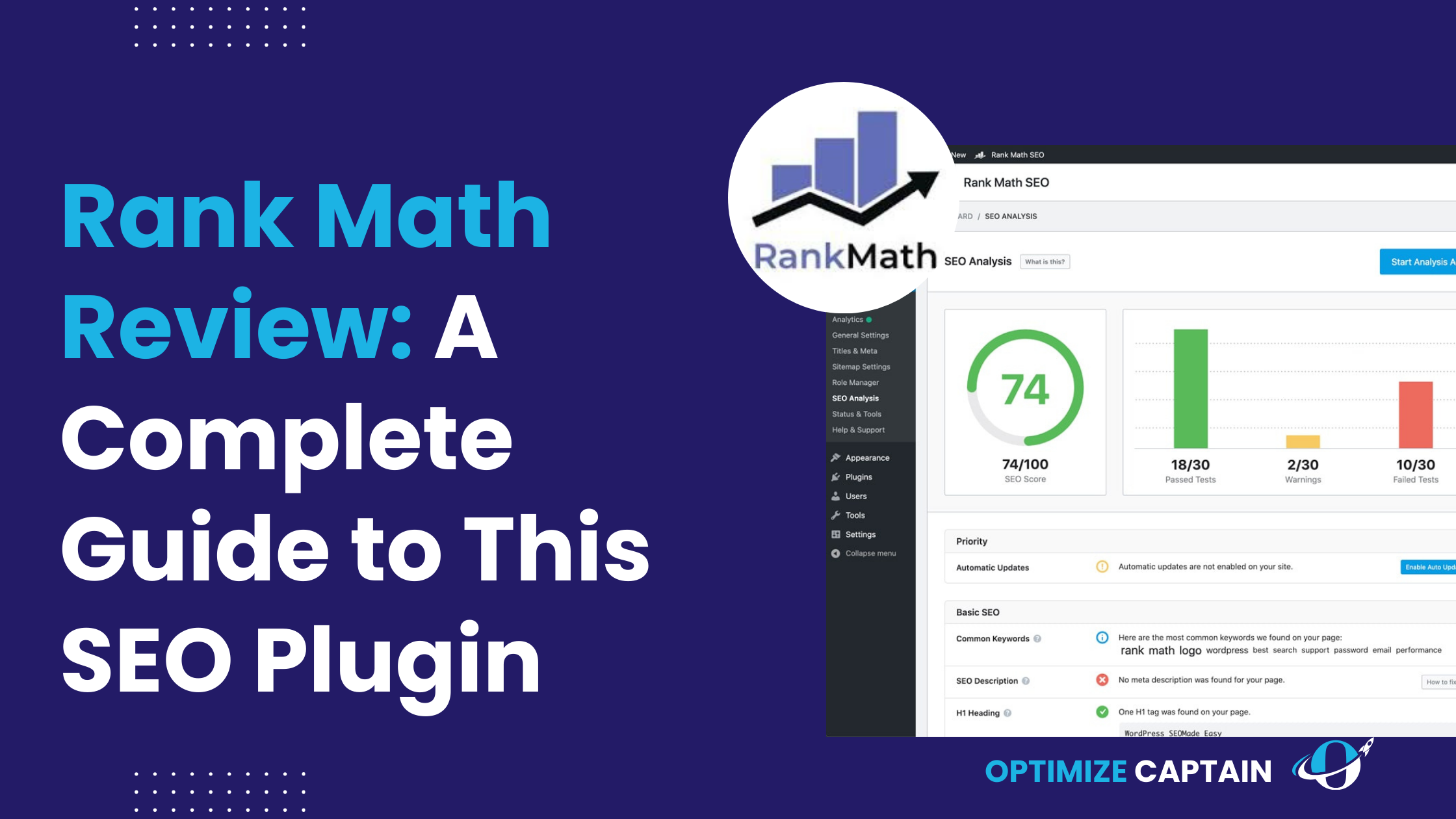When growing a SaaS business, you’ve probably heard the term “SEO” tossed around more times than you can count.
For good reason, search engine optimization (SEO) is key to getting your product in front of the right audience at the right time.
But here’s the thing: SEO isn’t just about tweaking keywords on your website or optimizing your meta tags.
That’s just scratching the surface.
Today, we’re exploring something that often goes unnoticed but is crucial if you want your SaaS company to thrive online: off-page SEO.
If you’ve ever wondered how to build authority, boost your search engine rankings, and drive organic traffic without constantly updating your website, you’re in the right place.
Consider this: pages with a lot of backlinks tend to rank higher on Google.
In fact, the top result usually has nearly four times more backlinks than the pages ranked from positions two to ten.
That’s the power of off-page SEO in action.
So, what can you expect from this guide?
We’ll walk you through the strategies and best practices for helping your SaaS product achieve the visibility it deserves.
In this SaaS off-page SEO guide, we’ll uncover all the tactics and techniques we’ve been using successfully for our clients, ensuring your brand stands out and thrives in the SaaS market.
What is Off-Page SEO?
Off-page SEO refers to all the actions you take outside of your own website to improve its search engine rankings. Unlike on-page SEO, which focuses on optimizing your website’s content and structure, off-page SEO is about building your site’s authority and reputation across the web. This is primarily achieved through backlinks—links from other websites that point to your site. These backlinks act as endorsements, signalling to search engines that your content is credible, valuable, and worthy of higher rankings.
Now, let’s break it down with a simple example:
Imagine two employees in an office—Person A and Person B. Both give the same suggestion during a meeting. Person A has the backing of a senior manager, while Person B does not. Naturally, the suggestion from Person A is taken more seriously because it comes with an endorsement from someone higher up.
In the world of SEO, your website is like Person A or Person B. When other reputable websites (like that senior manager) link to your content, it’s like they’re giving your site a vote of confidence. Search engines notice these endorsements (backlinks) and are more likely to rank your site higher because it’s more credible.
So, off-page SEO is about earning these endorsements—getting other websites to vouch for you through backlinks. The more quality backlinks you have, the more likely search engines are to rank your site higher, just like Person A’s suggestion was taken more seriously in the office.
Why is Off-Page SEO Important?
Off-page SEO is especially critical for SaaS businesses, and here’s why:
- Builds Domain Authority:
In the SaaS industry, trust is everything. Off-page SEO helps build domain authority by earning quality backlinks from reputable sites. The more authority your domain has, the more likely it is to rank higher in search results, making it easier for potential customers to find you.
- Enhances Brand Credibility:
When other well-known websites link to your SaaS product, it’s like receiving a stamp of approval. This not only boosts your rankings but also enhances your brand’s credibility in the eyes of both search engines and users.
- Drives Organic Traffic:
Quality backlinks and social media shares can significantly increase your site’s visibility, driving more organic traffic to your SaaS product. This is especially important for SaaS companies, where user acquisition is key to growth.
- Increases Visibility in a Competitive Market:
The SaaS market is highly competitive. Off-page SEO helps your brand stand out by improving your search engine rankings, which leads to more exposure and, ultimately, more customers.
- Supports Long-Term Success:
Off-page SEO is not a one-time effort but an ongoing strategy that builds your site’s authority and relevance over time. This long-term approach is crucial for sustaining growth and staying competitive in the SaaS industry.
- Amplifies Content Reach:
Off-page SEO activities like social media engagement and influencer outreach help amplify your content’s reach beyond your website. This increased exposure can lead to more backlinks, shares, and traffic, creating a positive feedback loop that supports your overall SEO efforts.
The Significance of Off-Page SEO for SaaS
70% of marketers see SEO as more effective than PPC for driving sales in the long term. For SaaS companies, which already face many hurdles—from high competition to significant upfront investments—having a solid SEO strategy isn’t just beneficial; it’s necessary.
SaaS businesses often spend thousands on marketing and customer acquisition. With so much money on the line, adopting strategies that provide sustainable, long-term growth is crucial. Off-page SEO is one such strategy. It helps build your brand’s authority and drives organic traffic that doesn’t require continuous spending like paid ads do.
A perfect example of this is Exploding Topics. When Exploding Topics launched, it needed to get its name out there and boost its search rankings. Josh Howarth, one of the co-founders with Brian-Dean, spotted an opportunity when a popular tool, Google Correlate, shut down. Instead of letting it pass by, he got creative.
Josh decided to use a strategy called broken link building. He reached out to websites that had linked to Google Correlate and suggested Exploding Topics as a useful alternative. Even though it wasn’t an exact match, it was close enough to be valuable. This simple yet strategic move earned them several high-quality backlinks.
Those backlinks didn’t just improve their search engine rankings—they helped establish Exploding Topics as a credible player in the industry. And the best part? They did it all without spending big on ads. This shows how an intelligent off-page SEO strategy, like broken link building (which we’ll discuss later), can make a significant impact, especially for a growing company.
Difference Between On-Page SEO and Off-Page SEO
On-page and off-page SEO are two sides of the same coin, both essential for building a strong online presence. On-page SEO focuses on optimizing the elements within your website, while off-page SEO is all about building your site’s authority and reputation through external factors. Both are crucial and work together to improve your search engine rankings.
Here’s a detailed comparison of what falls under each category:
| Aspect | On-Page SEO | Off-Page SEO |
| Content Optimization | Keyword usage and placement | Backlink building |
| High-quality, relevant content creation | Social media marketing | |
| Meta titles and descriptions | Influencer outreach | |
| HTML Code Optimization | Header tags (H1, H2, H3, etc.) | Guest blogging |
| Image alt text | Brand mentions | |
| Site Structure | Internal linking | Forum Participation |
| URL structure | Content promotion through external platforms | |
| Mobile-friendliness | Local SEO efforts (e.g., Google My Business) | |
| User Experience (UX) | Page load speed | Online reviews |
| Mobile Optimization | Citations in directories | |
| Clear navigation | Podcast appearances and interviews |
Example: Imagine your SaaS company has a blog post that is perfectly optimized with keywords, meta tags, and fast load times (on-page SEO). However, without off-page efforts like earning backlinks or promoting the content on social media, that post might not reach its full potential in search engine rankings. Similarly, a piece of content could gain numerous backlinks (off-page SEO), but it might still struggle to rank well if it’s not optimized for the right keywords or doesn’t provide a good user experience. On-page and off-page SEO are essential, as well as working together to ensure your content gets the visibility and credibility it deserves.
SaaS Off-Page SEO Strategies
Building a robust off-page SEO strategy is crucial for the long-term success of your SaaS business. Eight strategies will help you strengthen your online presence and build authority.
1. Advanced Backlink Building Techniques
Backlinks are the backbone of off-page SEO, but it’s not just about quantity—quality is key. High-quality backlinks from authoritative sites are like endorsements from industry leaders, telling search engines that your content is valuable and trustworthy.
- How to Do It: Aim to secure 5-10 high-quality monthly backlinks from websites with a Domain Rating (DR) of 70 or higher. Start by identifying guest posting opportunities with a simple Google search like “write for us” + [your industry]. For example, if your SaaS tool focuses on project management, you might search for “write for us project management” to find relevant sites.
Pro Tip: Use broken link building as a strategic approach. With tools like Ahrefs, find broken links on high-authority sites, then contact the site owner offering your content as a replacement. This helps the website owner and positions your content as a valuable resource.
Related Read : Strategies to Secure High-Quality Backlinks
2. Content Marketing for Link Building
Content marketing isn’t just about creating content—it’s about creating content others want to link to. This involves producing valuable, high-quality resources that address key pain points in your industry.
- How to Do It: Focus on creating skyscraper content that is more comprehensive and valuable than anything else available on the topic. Start by researching top-performing content in your niche using tools like BuzzSumo, then develop a superior version with updated data and additional insights.
Pro Tip: Once your content is ready, contact websites that have linked to similar content. Highlight your improvements and explain why your content would be a valuable resource for their audience.
Related Read : How Content Marketing Skyrockets Your Online Visibility
3. Link Building: Types of Links
Not all links are created equal. Understanding the different types of links—natural, built, and made—can help you develop a more effective link-building strategy.
- Natural Links: These are links earned organically without any outreach. They’re often the result of exceptional content that others naturally want to reference.
- Built Links: You actively pursue these links through guest posting, outreach, or partnerships. Set a goal to acquire 10 built monthly links from sites with a DR of 60+.
- Created Links include links you place yourself, like in forums or directories. While useful, they should be used sparingly and focus on quality over quantity.
Pro Tip: Diversify your link profile with a mix of these link types, ensuring you don’t rely too heavily on any single strategy.
4. Social Media Engagement
Social media is a powerful tool for increasing the reach of your content and driving traffic back to your site. It also plays a role in off-page SEO by indirectly influencing your rankings through increased visibility and engagement.
- How to Do It: Focus on the platforms where your target audience is most active. LinkedIn is a key platform for B2B SaaS companies. Post consistently, aiming for at least 3-5 times per week. Share your content and industry insights and engage with your audience by responding to comments and joining relevant groups.
Pro Tip: Use LinkedIn’s content suggestions tool to find trending topics that resonate with your audience. This will make your posts more engaging and likely to be shared.
5. Influencer Marketing
Influencer marketing is about leveraging the reach and credibility of industry influencers to amplify your brand’s message. Collaborating with influencers can help you gain visibility, build trust, and attract high-quality backlinks.
- How to Do It: Start by identifying micro-influencers in your industry—those with a smaller but highly engaged following. Engage with their content regularly by sharing, commenting, and offering thoughtful insights. Once you’ve built a rapport, approach them with a collaboration proposal, such as a product review or co-hosted webinar.
Pro Tip: Ensure that the influencer’s audience aligns closely with your target market to maximize the impact of your collaboration.
6. Brand Mentions and PR
Even without a backlink, brand mentions can boost your brand’s visibility and authority. Being mentioned in industry publications or popular blogs serves as social proof, enhancing your credibility.
- How to Do It: Monitor your brand mentions using tools like Google Alerts or Mention. When you find an unlinked mention, politely request that the site owner add a link to your website.
Pro Tip: Engage in proactive PR efforts by pitching story ideas to industry publications. Develop press releases for significant milestones, such as product launches or industry awards, to increase your chances of being featured.
7. Community Building
Building and engaging with online communities is not just about SEO—it’s about establishing your brand as a thought leader in your niche. This can lead to natural backlinks and increased brand visibility.
- How to Do It: Identify key forums, LinkedIn groups, or even subreddits where your target audience spends time. Contribute regularly by answering questions, sharing insights, and offering valuable resources. Over time, this builds trust and leads to others naturally linking to your content.
Pro Tip: Consider creating your community, such as a LinkedIn group or a dedicated forum. This will give you direct access to your target audience and position you as a leader in your industry.
8. Local SEO for SaaS
Even if your SaaS company serves a global audience, optimizing for local SEO can give you a competitive edge in specific regions. Local SEO helps you appear in searches for users in your area, which can be particularly beneficial if you’re targeting businesses in specific locations.
- How to Do It: Start by claiming and optimizing your Google My Business profile. Ensure that your Name, Address, and Phone number (NAP) are consistent across all online directories. Additionally, list your business in local directories relevant to your industry.
Pro Tip: Encourage satisfied customers to leave positive reviews on your Google My Business page. Positive reviews not only enhance your local visibility but also build trust with potential customers.
Related Read : SaaS Local SEO
5 SaaS Off-Page SEO Checklist
To ensure your SaaS business is maximizing its off-page SEO efforts, follow this practical checklist:
1. Audit Existing Backlinks
- What to Do: Regularly review your backlink profile to identify toxic or low-quality links that could harm your rankings.
- How to Do It: Conduct a backlink audit using tools like Ahrefs or SEMrush. Set a reminder to do this quarterly, and disavow any links that could negatively impact your SEO.
2. Monitor Brand Mentions
- What to Do: Track where your brand is mentioned online and seize opportunities for new backlinks.
- How to Do It: Set up Google Alerts for your brand and product names. When you find unlinked mentions, reach out and request a link. Explain how linking to your site can benefit their readers.
3. Engage on Social Media
- What to Do: Boost your off-page SEO by consistently engaging on social media platforms where your audience is active.
- How to Do It: Schedule regular posts using tools like Buffer or Hootsuite. Engage with your audience daily by commenting on posts, sharing content, or joining relevant discussions.
4. Track Referral Traffic
- What to Do: Monitor the traffic coming to your site from external sources to understand what’s working.
- How to Do It: Use Google Analytics to monitor referral traffic. Find which sources drive the most traffic and adjust your strategies accordingly. Set up a monthly report to review and tweak your off-page efforts based on the data.
5. Regularly Update Off-Page SEO Strategy
- What to Do: SEO isn’t set-it-and-forget-it—regular updates are essential to stay ahead.
- How to Do It: Review your off-page SEO strategies quarterly. To refine your approach, use the data you’ve collected from backlink audits, referral traffic, and social engagement. Stay updated with SEO trends by subscribing to industry newsletters or following experts on platforms like Twitter or LinkedIn.
Essential Off-Page SEO Tools for SaaS Bussiness
Here’s a quick rundown of the essential tools to help you manage your off-page SEO efforts effectively:
- Ahrefs
- What It Does: Comprehensive SEO tool for backlink analysis, competitor research, and content discovery.
- Free/Paid: Paid
- SEMrush
- What It Does: All-in-one SEO tool for keyword research, backlink tracking, and brand monitoring.
- Free/Paid: Paid (with limited free features)
- Moz Link Explorer
- What It Does: Backlink analysis tool with Domain Authority metrics and competitor comparison.
- Free/Paid: Free (limited) and Paid
- BuzzSumo
- What It Does: Content research tool to discover popular content and track social shares.
- Free/Paid: Paid (with limited free searches)
- Google Alerts
- What It Does: Monitors the web for mentions of your brand, competitors, or specific keywords.
- Free/Paid: Free
- HARO (Help a Reporter Out)
- What It Does: Connects you with journalists looking for expert insights, offering opportunities for high-quality backlinks.
- Free/Paid: Free (with paid premium options)
- Majestic SEO
- What It Does: Specialized backlink analysis tool focusing on link quality and trust metrics.
- Free/Paid: Paid
- Pitchbox
- What It Does: Outreach platform for managing link-building campaigns, finding prospects, and tracking responses.
- Free/Paid: Paid
Conclusion
Off-page SEO is a critical component of any successful SaaS business strategy. You can significantly boost your site’s authority and visibility by building high-quality backlinks, engaging with influencers, leveraging social media, and utilizing the right tools. Remember, off-page SEO is not a one-time effort but an ongoing process that requires consistency, creativity, and strategic thinking. By implementing the strategies outlined in this guide and regularly refining your approach, you’ll position your SaaS business for long-term success in an increasingly competitive market.
FAQ’s
1. What is the difference between on-page and off-page SEO?
On-page SEO optimizes elements within your website, such as content, meta tags, and internal linking, to improve search engine rankings. On the other hand, off-page SEO involves activities outside your website, like backlink building, social media engagement, and influencer outreach, to boost your site’s authority and credibility.
2. How long does it take to see results from off-page SEO?
Off-page SEO is a long-term strategy. It can take several months to start seeing significant improvements in your search engine rankings, especially if you’re focusing on building high-quality backlinks. However, the results are usually more sustainable and impactful over time.
3. What types of backlinks should I focus on?
Aim to acquire a mix of natural, built, and created backlinks. Natural backlinks are the most valuable as they’re earned organically. Built backlinks come from proactive efforts like guest posting, while created backlinks are manually placed in directories, forums, or comments.
4. Can social media activity influence my SEO?
While social media signals are not direct ranking factors, they can significantly influence your SEO efforts. Increased visibility and engagement on social platforms can lead to more backlinks, brand mentions, and referral traffic, boosting your search engine rankings.
5. Do I need paid tools for effective off-page SEO?
While free tools like Google Alerts and HARO can be very useful, paid tools like Ahrefs, SEMrush, and Moz offer more comprehensive features and in-depth analysis, making them valuable investments for serious SEO efforts.

